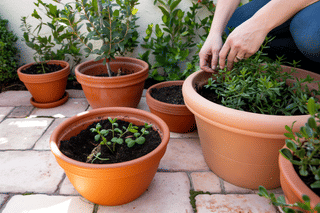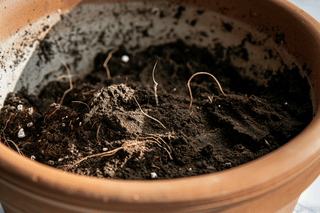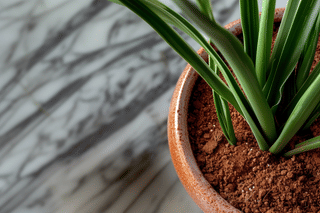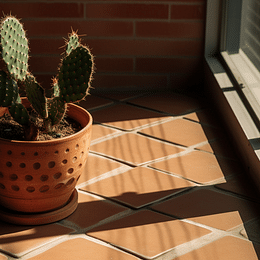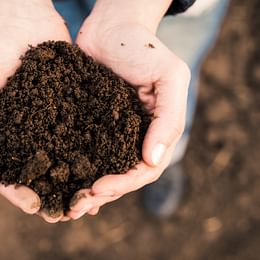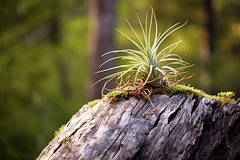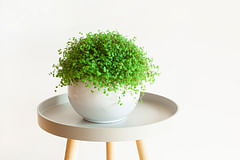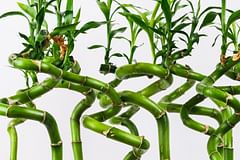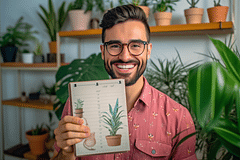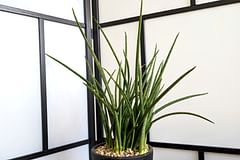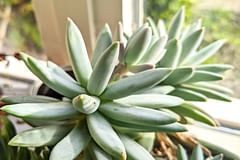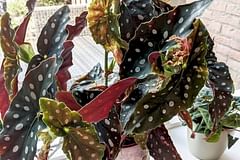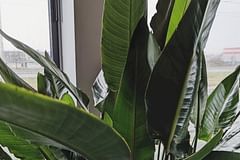Can You Reuse Soil Between Houseplants?
Learn how to properly reuse potting soil between houseplants in this comprehensive plant care guide: when to avoid reusing soil, steps for successful soil rejuvenation, and essential tips for maintaining healthy soil and plants. Perfect for both beginners and seasoned plant enthusiasts!
When you take care of houseplants and you've grown your collection quite a bit, you'll know that you've bought quite a few bags of soil. So, if you're currently repotting your plants and have a lot of plants moving around, you might wonder if you can reuse the soil you used for other plants with any new plants.
It seems like a cost-effective and environmentally friendly method, but is it good for your plants? The answer is "yes", but also "no". Why? That's what we'll look at in this plant care guide.
Let's find out in which cases you can reuse your potting soil with new plants and in which you should probably use new soil!
When can you NOT reuse soil between plants?
You can reuse the soil for new houseplants in certain cases, but sometimes you shouldn't reuse soil between your plants. Let's find out in which cases you shouldn't reuse any soil.
When the soil has degraded
Soil that shows signs of degradation shouldn't be used with other plants. These signs could be:
- Compaction: If the soil is hard and compacted, it usually blocks root growth and water drainage. This compacted soil has formed a hard crust, which is not a good place for plants.
- Loss of texture: Soil that has turned dusty or excessively sandy may have lost its structure and nutrient-holding capacity. You could still use this soil for plants that thrive in nutrient-poor soil like succulents and cacti.
When the previous plant has issues
If the soil hasn't degraded yet, you might think it's safe to use with new plants, but that might not be the case. You shouldn't reuse the soil for any new plants if the previous plant was suffering from these issues:
- Disease: If the previous plant suffered from a disease, the pathogens could remain in the soil and infect the new plant. Root rot is probably the most well-known disease.
- Pest infestation: If the soil is home to fungus gnats, you shouldn't reuse it. These pests can very easily start to eat the new (healthy) plant and infect it like the previous plant.
- Salt buildup: Over time, salts from fertilizers can build up in the soil, leading to root burn and poor plant health. You could still reuse this soil, but you'll have to flush out the built-up salt before using the soil with new plants.
So these are the most important reasons to not reuse the soil between houseplants, but there are also some cases when it's completely fine to reuse the soil for any new plants. Let's look at these!
When can you reuse soil between plants?
Now that we've looked at a few cases when you shouldn't reuse soil for your new houseplants, we'll have a look at the times when it's fine to reuse soil between plants.
If the previous plant was healthy and pest-free
If the previous plant was healthy with no signs of disease or pests, the soil may still be in good condition and could be a good home for a new plant. If the soil is still fluffy, you can likely reuse it for a new plant.
If the previous plant has the same care requirements
If the previous plant was healthy and has the same fertilizer and watering needs as the new plant, you can likely reuse the soil without any problems.
Example: If you have a heavy feeder like a Monstera and try to use this soil for a succulent, you'll very quickly overfertilize your succulent. If you know how to amend the soil to make it suitable for your new plant, you can still choose to reuse the soil with a plant that has different care needs, but I don't recommend it for beginners.
Steps to reuse soil between plants
Before you use the soil with a new plant, it's a good idea to follow a few simple steps. When you've determined that the soil is fine to reuse, you should take these 3 simple steps to successfully grow a new plant in it:
- Remove old roots: Clear out any remaining roots or plant debris to prevent decay and potential fungal growth.
- Sterilize the soil: Baking the soil in the oven at 180℉ for 30 minutes can help kill any leftover pests or diseases.
- Revitalize with nutrients: Mix in fresh compost or a balanced fertilizer to replenish nutrients that were depleted by the previous plant.
After you take these 3 steps, you can safely reuse the soil with new plants.
Tips for maintaining healthy soil and plants
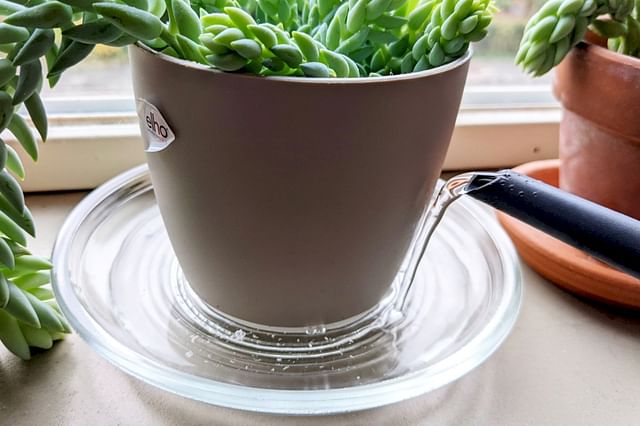
If you're planning on ever reusing soil between houseplants, there are a few things you can do to make sure the soil stays in good shape.
Proper watering
The most important thing to keep the soil healthy for a long time is to water your plant correctly. The goal is to avoid overwatering your plants, as this will cause root rot and will make it so you can't use the soil for any other plants as easily.
To help you water your plants correctly, I highly recommend you use a pot with drainage holes and mix in some perlite into the soil you use for your plants. This will drain excess moisture to the bottom of the pot quickly, so the risk of overwatering your plants is much lower.
Regular feeding
Besides watering your plants correctly, it's important to regularly feed your plants. This will help to keep the nutrient levels in your plant's soil from depleting. However, make sure to not overfertilize your plant, as this will cause a salt buildup, which can cause root burn on your plants.
If you're looking for ways to prevent root burn, you can have a look at this guide: How to avoid fertilizer burn in houseplants.
Thank you for reading this post! I hope it helps you to keep your plants healthy and beautiful! If you're looking for more guides on specific plants, you can always request a plant guide to get a guide for the plant you have trouble with.
Test your plant care knowledge
Quiz completed!
Want to learn more? Sign up for my newsletter to receive free tips in your inbox!
Sign up now!